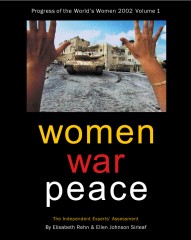War’s Impact Assessment: Unraveling Global Consequences
3 min read

The Aftermath Unveiled: Impact Assessment of War
In the wake of conflict, the repercussions resonate far beyond the battlefield, leaving lasting imprints on societies, economies, and global affairs. This article delves into the multifaceted dimensions of assessing the impact of war, shedding light on the complexities that arise in the aftermath.
Human Toll: Counting Lives Lost and Lives Altered
At the core of any impact assessment lies the human toll of war, where lives are not merely counted but deeply altered. Casualties on the battlefield, displacement of populations, and the enduring trauma experienced by both combatants and civilians are integral aspects that demand meticulous examination. The human cost serves as a stark reminder of the gravity of armed conflicts.
Economic Fallout: Examining Financial Ramifications
War imposes a significant economic burden, extending far beyond the immediate conflict zones. The destruction of infrastructure, disruption of trade, and the cost of military operations contribute to a profound economic fallout. In the aftermath, nations grapple with the challenge of rebuilding shattered economies, demanding a comprehensive analysis of the financial ramifications.
Political Landscape: Reshaping Power Dynamics
The impact of war reverberates through the political landscape, ushering in shifts in power dynamics and alliances. A thorough assessment examines how the geopolitical map is redrawn, alliances realigned, and the global balance of power reshaped. The aftermath of war often sets the stage for new geopolitical realities that demand careful scrutiny.
Social Fabric: Weaving New Narratives
Communities torn apart by conflict undergo profound social transformations. The displacement of populations, breakdown of social structures, and the erosion of cultural identities reshape the social fabric. An impact assessment delves into these societal shifts, recognizing the importance of understanding the complexities of rebuilding communities in the post-war period.
Psychological Scars: Lingering Effects on Mental Health
Beyond the visible scars, the impact of war leaves deep psychological wounds. Combatants and civilians alike grapple with trauma, anxiety, and post-traumatic stress disorder. An in-depth assessment acknowledges the importance of addressing mental health challenges, providing insights into the resources needed for healing and rebuilding affected individuals and communities.
Environmental Consequences: Gauging the Ecological Price
War takes an environmental toll, often with long-lasting consequences. From the use of destructive weaponry to the collateral damage on ecosystems, an impact assessment evaluates the ecological price of armed conflict. Understanding the environmental consequences is vital for adopting sustainable practices in the post-war rehabilitation process.
Humanitarian Challenges: Navigating the Road to Recovery
The aftermath of war often results in humanitarian crises, necessitating international aid and assistance. An impact assessment scrutinizes the challenges of delivering aid in conflict-ridden regions, highlighting the importance of effective humanitarian efforts in addressing immediate needs and fostering long-term recovery.
Technological Advances: Shaping Future Warfare
The impact assessment of war extends to technological realms, influencing the future landscape of warfare. Advances in military technology, cyber warfare capabilities, and innovations in weaponry shape the trajectory of conflicts to come. An analysis explores how technological advancements impact security strategies and global defense systems.
Impact Assessment of War: A Holistic Perspective
For a comprehensive analysis of the impact of war, encompassing human, economic, political, social, and environmental dimensions, refer to Impact Assessment of War. This detailed examination offers valuable insights for policymakers, scholars, and the public, providing a holistic perspective on the complexities and consequences of armed conflict.
Conclusion: Forging Paths to Healing and Prevention
As we assess the impact of war, it becomes evident that the road to recovery is multifaceted and challenging. Beyond understanding the consequences, the focus must also be on forging paths to healing, reconciliation, and prevention. Only through a collective commitment to peace can nations hope to mitigate the devastating effects of war and build a more stable and harmonious future.



:quality(70)/cloudfront-eu-central-1.images.arcpublishing.com/thenational/BLUXOIJMUJBTBGQ3WBSYXMMK4E.jpg)

